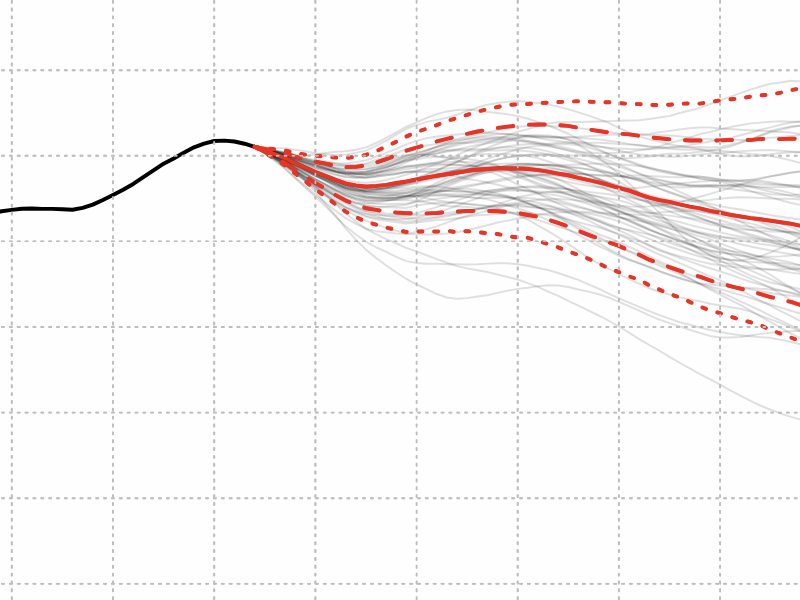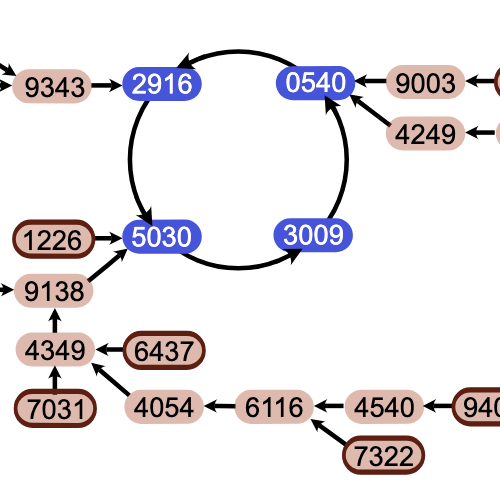Can You Divide by Three?
by Brian Hayes
Published 6 June 2006
Well, can you? And can you prove it? Peter G. Doyle and John Horton Conway can. In a 35-page article posted to the arXiv last week they write:
In this paper we show that it is possible to divide by three. Specifically, we prove that for any sets A and B, if there is a one-to-one correspondence between 3 × A and 3 × B then there is a one-to-one correspondence between A and B. Here 3 denotes the standard three-element set {0, 1, 2} and × denotes Cartesian product.
They hasten to add that they were not the first to prove this result. The problem has a history. In 1901 Felix Bernstein solved the easier case of division by 2. “Bernstein also indicated how to extend his results to division by any finite n,” Doyle and Conway write, “but we are not aware of anyone other than Bernstein himself who ever claimed to understand this argument.” In 1922, Waclaw Sierpinski found a simpler proof for division by 2 but failed in his attempts to extend the method to division by 3. Then, four years later, Sierpinski’s student Adolf Lindenbaum announced that he had a proof of divisibility by 3, but he gave no details, and when Lindenbaum died in the mass murders at Paneriai in 1941, the proof was lost. Lindenbaum’s announcement was made in a paper written jointly with Alfred Tarski, who must have known Lindenbaum’s proof at the time, but he was unable to reconstruct it later; in 1949 Tarski came up with a different proof of his own. Doyle and Conway think that their proof is probably equivalent to the lost proof of Lindenbaum.
How can questions about dividing by 2 or 3 possibly be a subject of serious mathematical inquiry in the 21st century? Well, that’s what’s so wonderful about modern math. Earlier generations of mathematicians—going all the way back to Pythagoras and Euclid—could have solved such problems in an eyeblink, whereas deep thinkers today find them a daunting challenge. (We call this progress!)
To explain why division has gotten so much harder, I have to confess that I have neglected to mention an important condition: Doyle and Conway insist on a proof that does not rely on the axiom of choice (see also the official web site), a concept introduced into set theory in 1904 by Ernst Zermelo. If you accept the axiom of choice, you assume that from any collection of nonempty sets you can always choose one element from each set. This may seem like an innocent assumption, but some of its consequences are not so obvious, and it has remained mildly controversial throughout the past century. In any case, if you can get along without such an assumption, so much the better.
What does the axiom of choice have to do with division by 3? We usually think of division as a process in arithmetic, but the problem addressed by Doyle and Conway lies in the domain of set theory. They seek a one-to-one correspondence between the elements of two sets. For finite sets this kind of pairing operation is straightforward, and it can even be done readily enough for certain infinite sets—namely those whose elements can be “well ordered,” or arranged in a definite sequence. For example, the infinite set of natural numbers has the familiar ordering 1, 2, 3,…, and the rational numbers can be put in a sequence such as 1/1, 1/2, 2/1, 1/3, 3/1…. Do all sets have a well-ordering? It turns out that the answer is yes only if you admit the axiom of choice. And since Doyle and Conway want a proof whose validity is independent of this axiom, they must somehow show a one-to-one correspondence without first ordering the elements of the sets.
If you’d like to know how they do it, by all means read the paper! It is a remarkably lucid—and at times entertaining—example of mathematical writing.
According to Doyle, the paper was written in 1990 and has been available on Doyle’s web site since 1994, but until now it has never been more widely circulated. A footnote linked to the byline suggests why:
John Conway collaborated on the research reported here, and has been listed as an author of this work since it was first distributed in 1994. But he has never approved of this exposition, which he regards as full of ‘fluff’.
I’m a sucker for ‘fluff’.
Publication history
First publication: 6 June 2006
Converted to Eleventy framework: 22 April 2025



